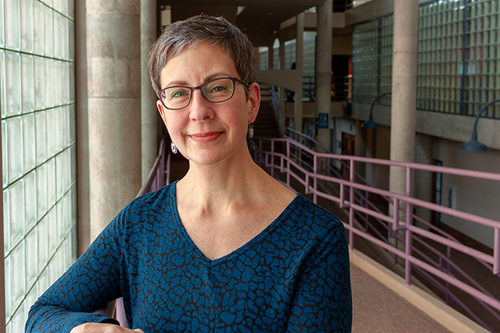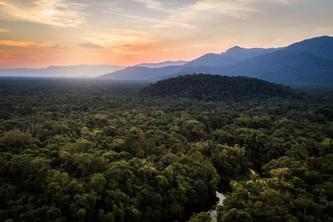
We tend to assume nature is good for kids – now we have convincing, converging evidence that supports our assumptions. In a research summary produced with the National Science Foundation’s support, researchers analyzed multiple peer-reviewed studies, pulling together streams of evidence to demonstrate that experiences in nature really do positively impact children's development and learning. Now they've set forth an ambitious research agenda focusing on the most critical questions to advance the field of nature-based learning.
Senior author Cathy Jordan, Ph.D., with the University of Minnesota’s Institute on the Environment and the Medical School, as well as the Children & Nature Network, answers questions about how experiences in nature can boost children’s development and academic performance.
Q: What is nature’s impact on children?
Professor Jordan: At Children & Nature Network (C&NN), we like to say that nature makes children healthier, happier, smarter and better stewards of the environment. But let’s break that down with some examples. Children tend to be more physically active in nature-based learning and particularly nature play. This can improve fitness, control weight and possibly reduce risk of chronic diseases related to being overweight.
Contact with nature also improves recovery from stressful events and can improve mood and feelings of wellbeing. Learning and playing in nature – even just a view of nature from a window – can also improve cognitive functions such as attention and self-regulation, which can enhance the process of learning.
Finally, when people have meaningful and relevant experiences in nature, they tend to feel an emotional connection to the natural world, develop positive environmental attitudes, and not only absorb information about protecting the environment, but also act on it. Providing such meaningful experiences in childhood is an effective way to grow environmental stewards.
Q. Specifically, why do you say that the natural environment is a resource for learning and development?
Professor Jordan: We often think about nature or greenery as a pleasant backdrop, but it can be so much more. As my colleagues and I reviewed the published academic literature, we found evidence that nature has a restoring effect on attention; improves self-discipline; reduces stress; increases physical activity and fitness; and promotes motivation for and engagement in learning. All of these effects have been shown to improve learning.
Nature also plays a role in classroom climate. When children benefit from nature-based learning and nature play, the effects follow them into the classroom – creating a calmer, quieter and safer setting for learning, as well as warmer, more cooperative relations among students.
While none of these effects are entirely new, our review is the first time these lines of evidence from psychology, education, cognitive neuroscience and other fields have been pulled together. Taken together, it creates a stronger case for the importance of nature for learning and development. It also helps explain something that has been a puzzle for researchers — why even small doses of nature sometimes have surprisingly large effects.
The key to the puzzle lies in how these effects work together, in a student and in a classroom. Nature exposure might make a student not only more attentive, but also less stressed and more interested in learning. And if you have a whole classroom of students who are less stressed and more cooperative, attentive, interested and absorbed, you can begin to see how the individual and classroom level impacts multiply.
Q: What was the most surprising thing you learned in examining the studies you reviewed?
Professor Jordan: We assume that nature is good for kids. We often remember our own nature-based experiences as pleasant and formative, sometimes even transformative. Yet until recently, the research attempting to demonstrate nature’s impact on children’s learning and development has not been very compelling, with a large number of studies with relatively weak designs and, unfortunately, overly optimistic claims.
When we launched our literature review, we were expecting to come up with more questions than answers. Instead, we found that the research has been getting more rigorous: Findings have been replicated in multiple contexts; researchers have begun to illuminate the mechanisms underlying the findings; and results entirely outside the study of nature and learning are pointing to the same conclusions.
With such converging evidence, we can now be more confident that nature really is good for kids!
Q: How can childcare centers, schools and other academic organizations include nature in their academic programs?
Professor Jordan: In order for children to reap the benefits of nature for learning and development, there needs to be access to nature, teachers prepared to use nature effectively, and support for nature-based learning by administrators and parents.
Access to nature means that either the school’s campus needs to offer a variety of natural areas or students need to be able to visit nearby natural areas on a regular basis. Teacher preparation programs and professional development opportunities need to offer educators training in nature-, place- and inquiry-based educational approaches.
It’s hard to be the only teacher using nature-based approaches. Individual teachers will be most successful when they’re part of a team of nature-based educators who have the support – including financial backing – of their educational leaders. Parents can help by making sure children are prepared to dress appropriately for the outdoors and by encouraging a connection to, and comfort with, nature through family activities in the outdoors.
It is our hope that isolated efforts by some teachers will spread and eventually become mainstream practices. Teachers who have pioneered nature-based instruction should serve as models, helping others address its challenges and take full advantage of its benefits.
Q: What else are you doing to further research to promote understanding of how nature affects youth development?
Professor Jordan: Based on our literature review, as well as input from more than 100 educators, environmental educators, youth workers, researchers and others, our team has proposed a research agenda to drive the next chapter of research on nature-based learning toward the most important questions and the most rigorous research designs.
Some of the questions we posed seek to deepen our understanding of how learning in nature affects what children learn, how they learn and how it varies based on age, gender, socioeconomic status, ethnic background, special needs and individual differences. Other questions seek to find causal explanations for observed outcomes, such as whether decreased stress, improved attention, or enhanced engagement might explain the relationship between learning in nature and academic success.
To create optimal conditions for nature-based learning, the research agenda also includes practical questions about how to prepare teachers to work successfully in nature and how to support their adoption of this approach.
This research agenda also suggests a few questions that have the potential of uncovering relationships between nature and learning that could be “game changers.” For example, might learning in nature prove to be relatively more effective for those students most at risk for academic struggles, thereby narrowing the academic achievement gap?
The answers to these sorts of questions could fundamentally change the practices of policymakers, educators, school administrators, urban planners, designers, and park and nature center staff; improve outcomes for kids; and reduce the societal cost of education. It is time to take nature seriously as a resource for learning.
Cathy Jordan, Ph. D. is an associate director at the University of Minnesota’s Institute of the Environment and an associate professor in the Department of Pediatrics at the Medical School. She is the consulting research director for the Children & Nature Network. Jordan is a pediatric neuropsychologist by training and has a scholarly interest in the salutary effect of the environment on human development. Her work focuses on promoting research endeavors to understand child health, learning and development through play in nature and nature-based education.
About “Talking...with UMN”
“Talking...with UMN” is a resource whereby University of Minnesota faculty answer questions on current and other topics of general interest. Feel free to republish this content. If would like to schedule an interview with the faculty member or have topics you’d like the University of Minnesota to explore for future “Talking...with UMN,” please contact University Public Relations at [email protected].
- Categories:
- Agriculture and Environment





